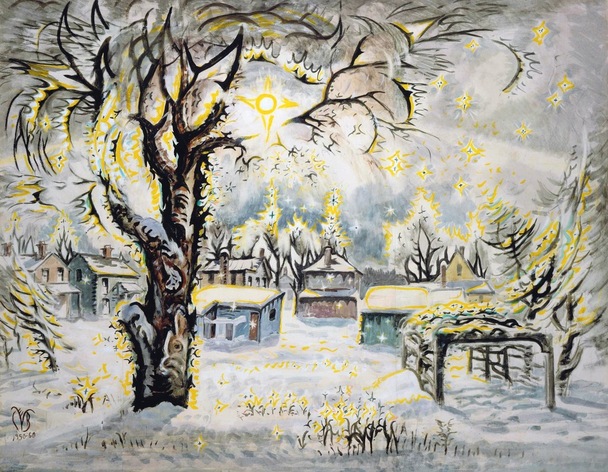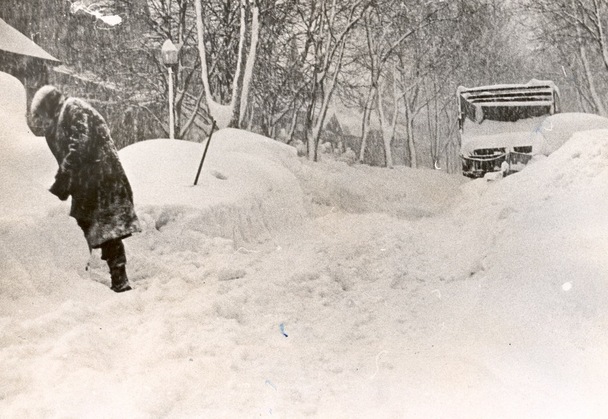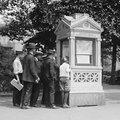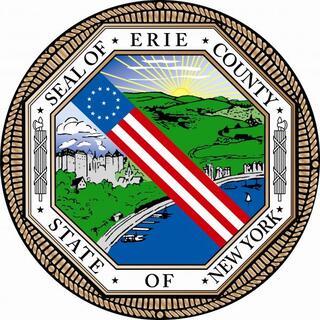
Charles Burchfield’s Winter Diamonds (1950-1960) is one of several winter-themed paintings executed by the artist, and is reminiscent of scenes throughout the Southtowns this past November.
Courtesy Burchfield Penney Art Center
Copious quantities of snow is nothing strange to Western New York. It is simply part of winter life here—and that is nothing new. Of course, bring up the “B” word around the region and the discussion will inevitably drift (pun intended) to the infamous “Blizzard of ’77.” But that epic storm of 38 years ago was not an isolated event, as the incredible lake effect snows of this past November remind us. Though Western New York Heritage’s offices were on the northern cusp of the driving bans, half our staff was making international headlines under nearly seven feet of snow. Thus it seems fitting to devote a few paragraphs at the conclusion of this issue to a survey of snowstorms past.
Young Ira Petit of Wilson, NY recorded a few epic snowfalls in mid-19th century Niagara County. His journal entry for February 20, 1862 read, in part: “A dreadful storm of snow and blow last night blockaded the road; se we were called out this morning to raise the blockade.” Then there was the Great Lakes Storm of November 1913, also referred to as the “White Hurricane” or simply “The Big Blow,” that claimed LV-82, Buffalo’s light vessel, along with her crew of six coast guardsmen who stayed their post to warn other ships during the storm.
Seventy years ago—in February 1945—snow moved Charles Burchfield to expand upon a painting he had executed nearly 30 years earlier. “The recurrent blizzards and storms of this winter,” he wrote, “have filled me with the impulse to paint a blizzard.” The result was “The White North Wind,” an enlargement of a 1918 painting entitled simply “The Blizzard,” which depicted, in Burchfield’s words, “two ghostly windblown houses about to be engulfed by a white monster of a cloud.” Surely anyone living in West Seneca or Lancaster can relate to these words of seven decades ago.

A Western New Yorker attempts to dig out during the December 1937 snowstorm that claimed ten lives.
Western New York Heritage Press Collection
The artist had good reason to reflect on the snows of that season. December 1944-January 1945 witnessed a succession of storms that dumped a total of 90 inches of snow on Western New York, paralyzing the region. War production was interrupted, as was delivery of such civilian staples as milk and bread. Wartime also meant a shortage of personnel to assist with snow removal. But perhaps most dire was the impact on Western New York’s rail net. As the second largest rail hub behind Chicago, the disruption of Buffalo rail traffic sent shockwaves throughout the eastern half of the country. Not only were there delays in the transportation of important war materiel, but also of staples like coal used to fuel locomotives, homes and schools. In late January, an embargo prohibited the shipment of anything but war-related cargo and civilian supplies deemed to be essential. Eventually, soldiers with railroad experience were released to help clear the tracks, and by early February the crisis had passed. It was with these events in mind that Charles Burchfield put brush to canvas to expand upon his earlier painting.
The artist would paint numerous works depicting winter scenes over his life, including our cover image, “Winter Diamonds,” painted between 1950 and 1960. And there would, of course, be other snow storms, including that of this past November. Though this purely lake effect event may have impacted a relatively small portion of the region, in comparison to some of the more widespread blizzards of the past, the incredible snowfall that occurred between November 17 and 19—and that has become colloquially known as “Snowvember”—will surely join the snows of the past as part of Western New York’s wintry heritage.









